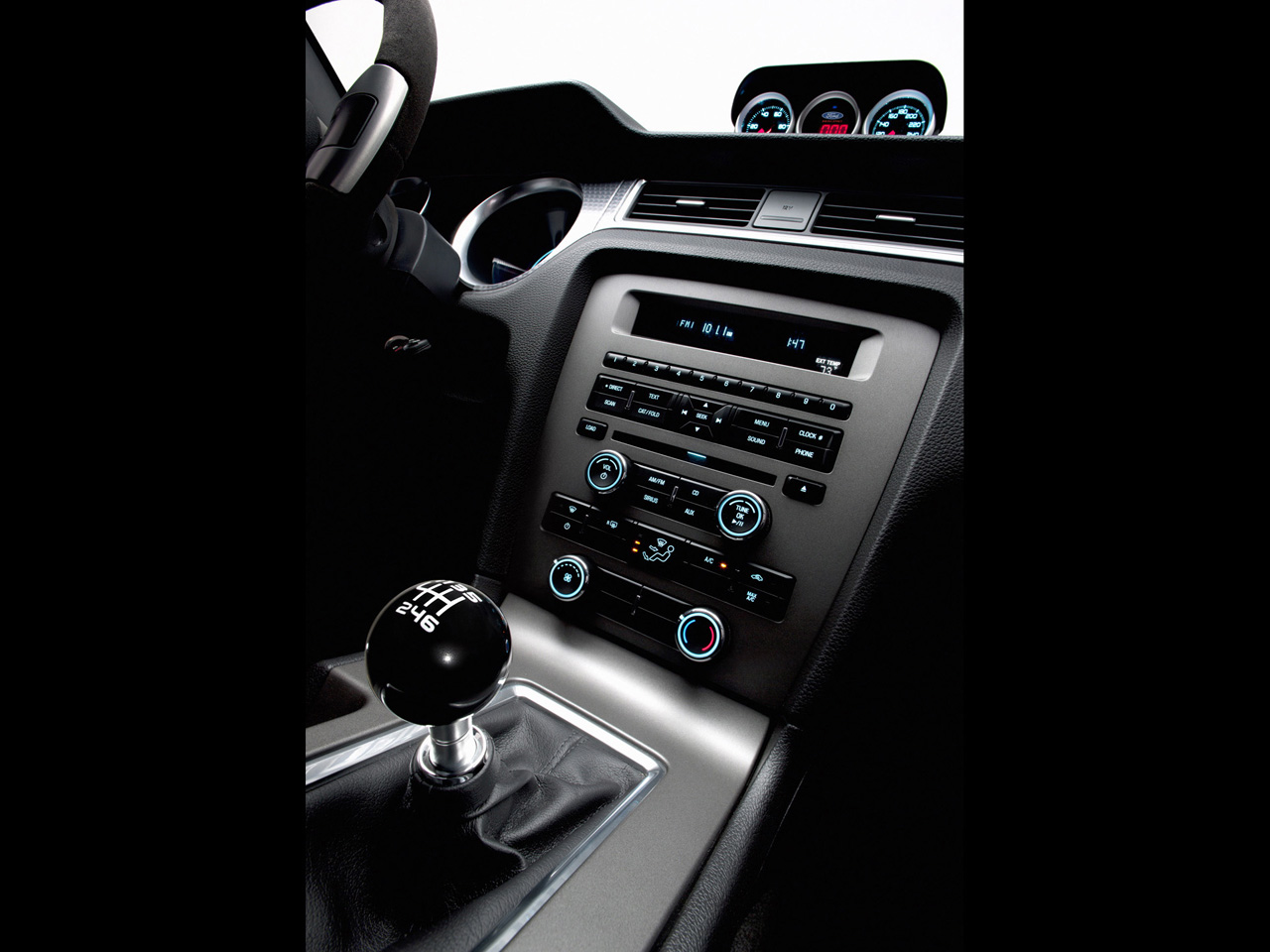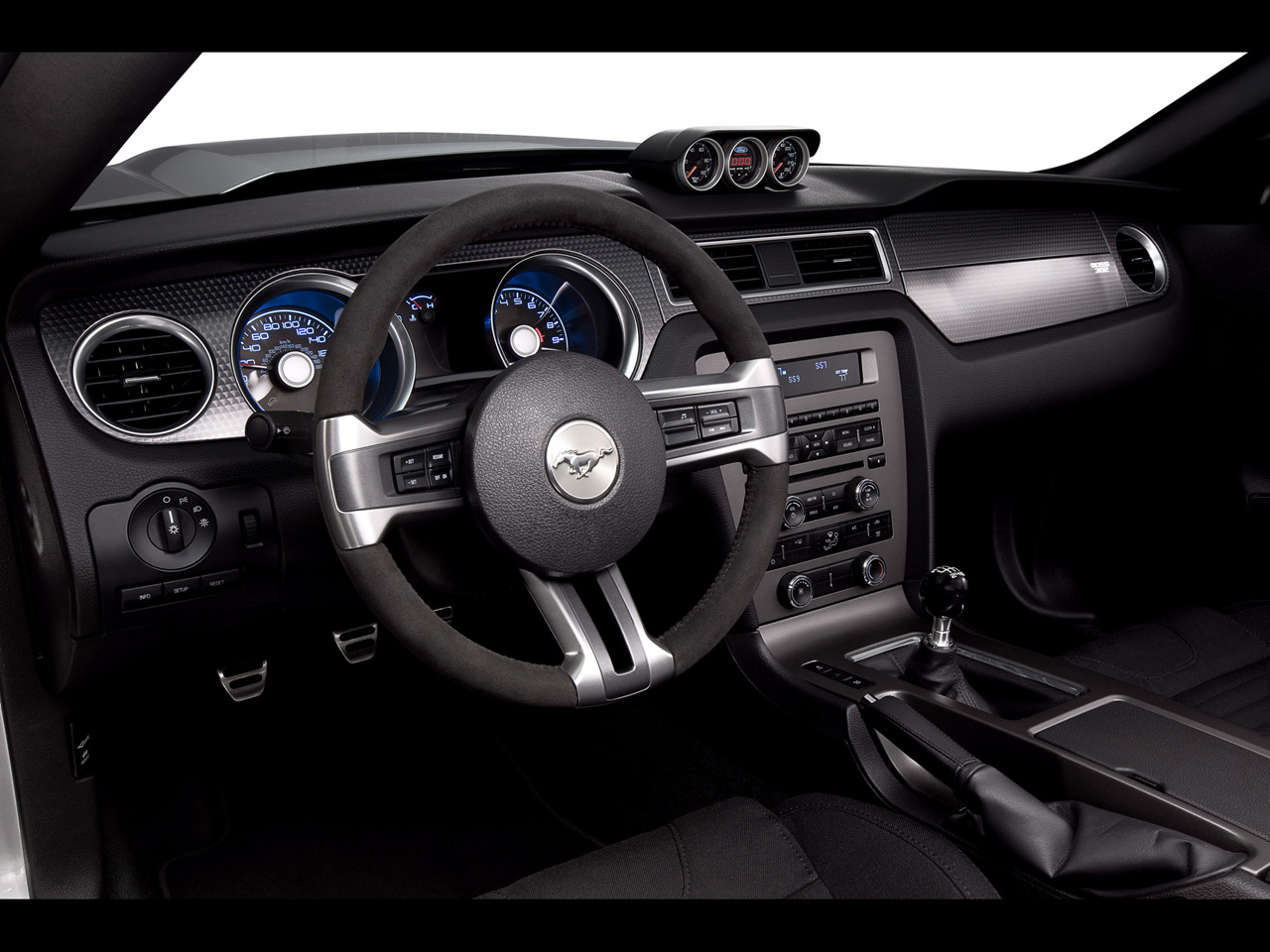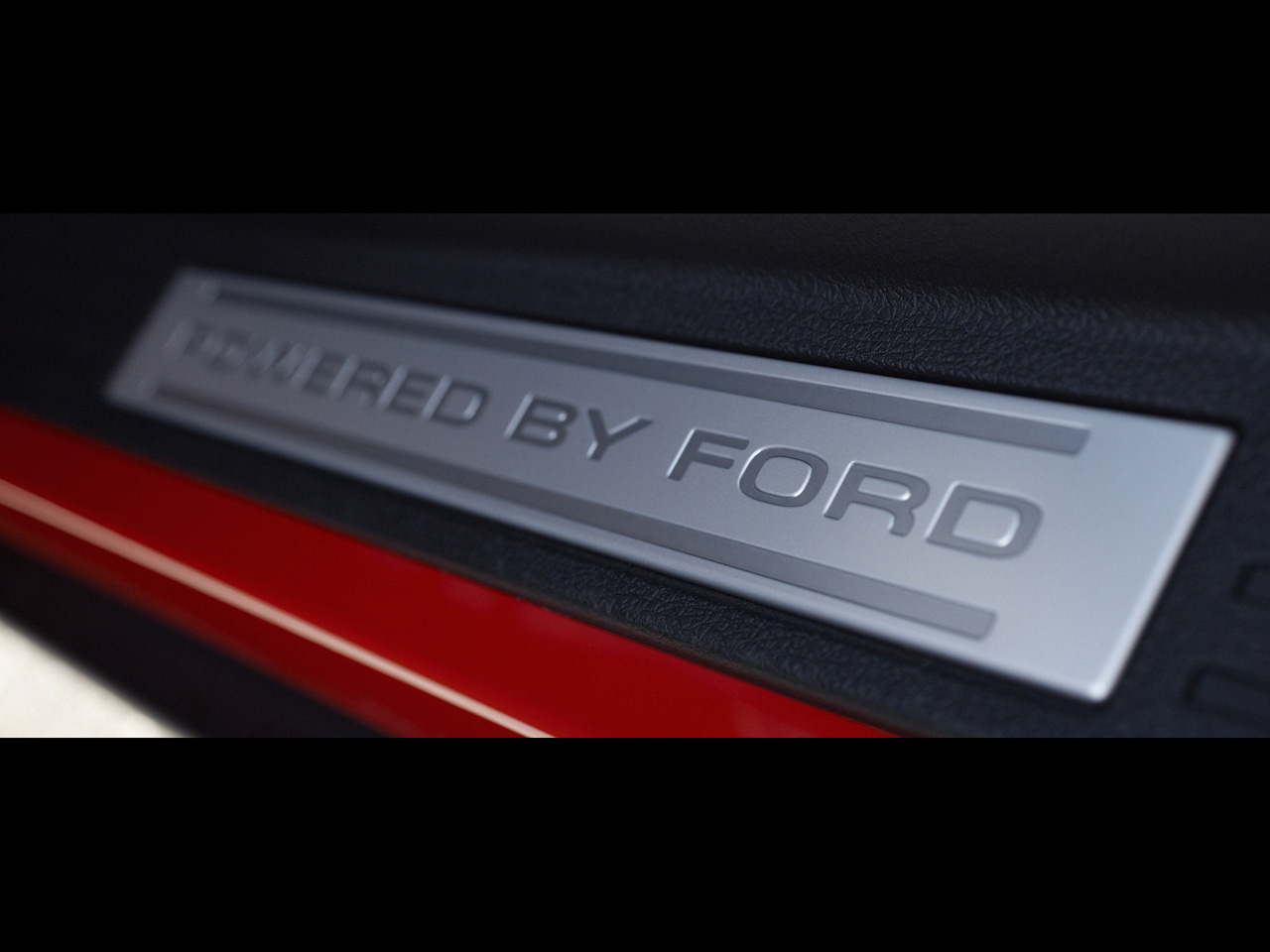2012 Ford Mustang Boss 302 Laguna Seca
|
Price |
-- |
Production |
-- | ||
|
Engine |
5 liter V8 |
Weight |
3636 lbs | ||
|
Aspiration |
natural |
Torque |
-- | ||
|
HP |
440 hp |
HP/Weight |
8.3 lbs per hp | ||
|
HP/Liter |
88 hp per liter |
1/4 mile |
-- | ||
|
0-62 mph |
-- |
Top Speed |
-- |
(from Ford press release) LAGUNA SECA PACKAGE TAKES NEW 2012 FORD MUSTANG BOSS 302 TO TRACK-READY CONDITION
•Laguna Seca package
pares the race-inspired 2012 Mustang Boss 302 down to its
essential elements, with aggressive suspension, chassis and
aerodynamic tuning creating a ready-for-racing Boss
•Ford Mustang team members developed the package to provide
weekend racers with a factory track car that could be driven to
the course, take the win, then driven back home again
•R-compound tires, rear seat-delete, aggressive front splitter
for track use, and rear spoiler and rear cross-car bracing shave
seconds off track times and boost lateral acceleration to 1.03 g
MONTEREY, Calif., Aug.
13, 2010 – How do you amp up a performance car package as complete
as the new 2012 Mustang Boss 302 – already a street-legal race car
in its own right? Pull out everything that doesn’t make it go faster
and add in more of what does. The result is the limited-production
Laguna Seca package – the ultimate 2012 Boss, named to commemorate
the first-place Boss 302 finish at the 1970 Trans-Am series opener.
“The Laguna Seca package puts a race-ready version of the new
Mustang Boss 302 directly into enthusiasts’ hands,” said Mark
Fields, Ford president of The Americas. “Laguna Seca isn’t intended
for Boss buyers who simply want an exhilarating daily driver. Think
of it like a factory-built race car, which we hope avid racers and
track-day fans are going to love.”
Boss Laguna Seca builds on the bumper-to-bumper improvements found
on the standard Boss while further stiffening the chassis and
installing an aerodynamics package carried over almost in its
entirety from the Ford Racing Boss 302R.
“Drivers who know how to get the most from a tuned race car on a
closed course are going to be amazed by what the Laguna Seca is
capable of,” said Derrick Kuzak, group vice president, Global
Product Development. “The balance, agility and tuning of each
vehicle system places the driver at the center of the machine,
completely connected to everything the car is doing.”
Chassis enhancements
Laguna Seca cars are
powered by the same smooth, high-winding 440-hp 5.0-liter V8 as the
standard Boss, since the engine was already tuned specifically for
road racing. Instead, engineers turned their attention toward
delivering power to the ground most efficiently, and getting the car
around a track in the quickest possible time.
“When we built the Boss, we had to step back and ask ourselves ‘How
do we improve on this?’” said David Pericak, Ford Mustang chief
engineer. “That car is so strong we realized the Laguna Seca package
was going to have to be just a fraction of a step back from the Ford
Racing 302R to top it. So we went back and threw daily-driver
practicality out the window, cut some things we couldn’t cut on the
volume model, like the back seat, and built it the way we would set
up a production Boss for pure competition.”
Laguna Seca cars eliminate the rear seats, instead adding a
cross-car X-brace that couples the structure between the rear
wheels. The brace offers chassis stiffness improvements of as much
as 10 percent and allows the suspension tuning – precisely
calibrated by Mustang team members – to better do its job.
Standard Recaro front seats were designed by Ford SVT in cooperation
with Recaro for high performance Mustang models, and are shared
between the Boss and GT500. An Alcantara-covered race steering wheel
provides a solid grip for hard cornering.
Engine power routes through a six-speed close-ratio manual gearbox
to a standard 3.73-ratio Torsen limited-slip differential, helping
the revised rear suspension deliver maximum torque and traction
under the punishing conditions encountered on the track.
Higher spring rates and a larger rear stabilizer bar – all upgraded
over Boss specifications – help generate unrelenting grip. And
drivers can dial in exactly the level of shock stiffness a
particular track requires using the four standard, independently
adjustable dampers with Laguna Seca-specific valving.
The final touch for a proper race car was to add the proper wheels
and tires: Laguna Seca models use lightweight 19-inch alloy racing
wheels in staggered widths: 9 inches in front, 10 inches in the
rear. R-compound ultra-high-performance tires, 255/40ZR-19 in the
front, 285/35ZR-19 in the rear, maintain contact with the pavement –
a job that ended up being trickier than expected.
“The R-compound tires on the Laguna Seca are so sticky we had to
really work on the rear suspension tuning to make sure drivers can
get the most out of them,” explains Pericak. “The rear stabilizer
bar is the largest we’ve ever installed on a production Mustang –
including any SVT product. The rear spring rate was also maximized
to work with the massive rear tires and balance the car for minimal
lap times.”
While standard Boss 302 cars get vented brake dust shields to help
cool the rotors, Laguna Seca models receive Ford Racing front brake
ducts that force outside air directly onto the 14-inch vented front
rotors, helping to eliminate brake fade and ensure hard, repeatable
late braking on the track. Combined, the braking changes help refine
the sense for drivers of being directly connected to the pads – an
essential edge during car-to-car combat on a road course.
Added up, the further improvements to Boss Laguna Seca result in the
best-handling Mustang ever, with more than 1.03 g of lateral
acceleration, stopping distances shortened by three feet from 60 mph
over Boss, 0-60 acceleration improvements of one tenth of a second,
and an overall expected lap time improvement of one to two seconds
over the standard Boss on a typical road course.
Styling evokes racing, improves aerodynamics
As a race car should,
Boss 302 models with the Laguna Seca package look like nothing else
on the road. A bright red C-stripe offsets either Black or Ingot
Silver paint, and is complemented by a red roof panel. Red also sets
off the front grille, mirror caps and rear pedestal spoiler, while
Laguna Seca rear badging and unique two-tone red and silver wheels
complete the transformation.
Adding both to appearance and aerodynamics, an aggressive front
splitter for track use adds downforce at the front of the car, while
helping channel air under and around the car. At the same time, air
impacting the front end is funneled into the radiator and brake
ducts, supporting cooling even under grueling race conditions.
“The Laguna Seca front splitter is really a Ford Racing piece we’ve
lightly adapted for our purposes,” explains Pericak. “It’s been
tested and refined for the last six months on the Boss 302R to
perform exactly as required on the track; we just made a few changes
so it could be adapted to the production Boss – though owners will
still want to avoid speed bumps and parking blocks.”
At the back, a large rear spoiler is sized to exactly complement the
effect provided by the front splitter and underbody aero treatments,
with the combination adding as much as 90 pounds of downforce at 140
mph.
“Balance is the key on Boss, and even more so on Laguna Seca,” said
Pericak. “A winning race car has to do everything well, and we’ve
had the ability to test all the engineering that went into Boss
Laguna Seca on the Ford Racing 302R. It’s not for everyone: It’s
stiffer, there’s no back seat, and the aero package is designed for
downforce, not speed bumps in the mall parking lot. But for
hard-core Mustang racers who want something they can occasionally
drive on the street, to shows or whatever, Laguna Seca is the car
they’ve been waiting for, and they’re not going to be disappointed.”



